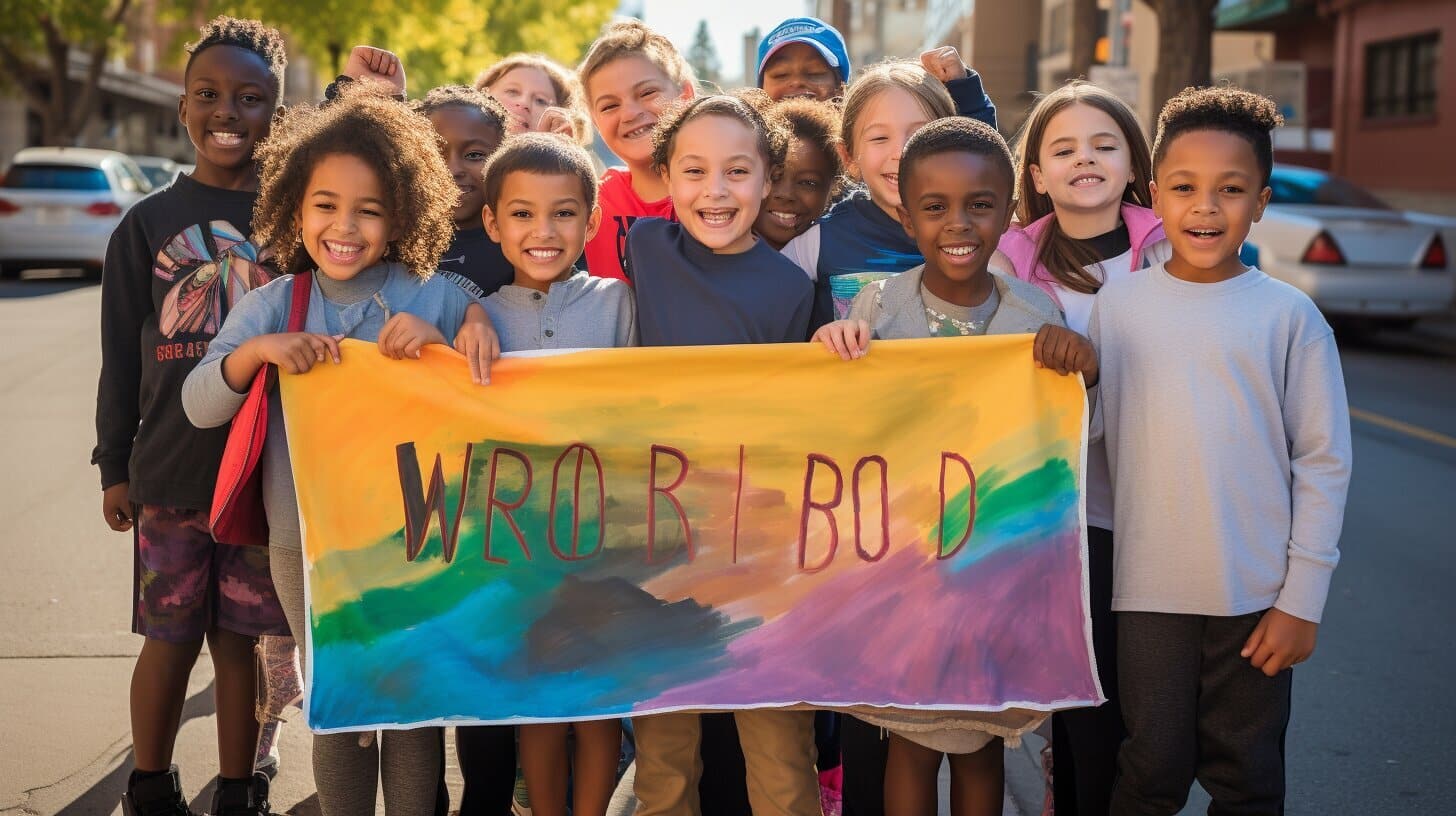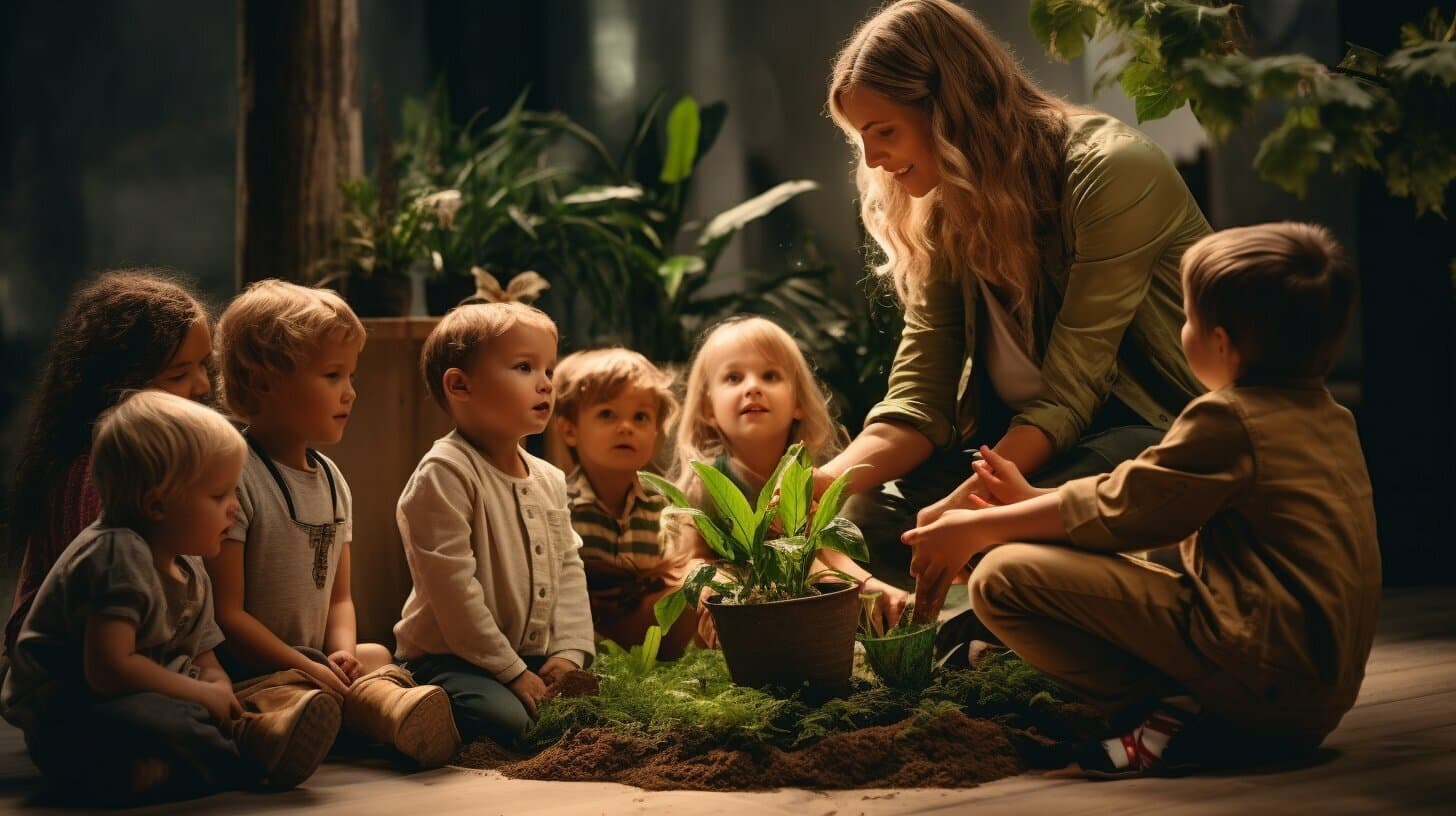Mindfulness can be a powerful tool for children to develop emotional regulation, focus, and happiness. However, explaining the concept of mindfulness to a child can be challenging. To make it simple and fun, we have compiled a list of techniques to help you introduce mindfulness to your child.
From child-friendly definitions to engaging activities, this article will guide you through the process of teaching mindfulness to your child. By the end of this article, you will have the tools and resources to support your child’s mindfulness journey.
Key Takeaways:
- Mindfulness can benefit children’s emotional well-being, focus, and overall happiness.
- Explaining mindfulness to a child can be challenging, but it can be made simple and fun with the right techniques.
- This article will provide an overview of techniques, activities, and resources to help you teach mindfulness to your child.
What is Mindfulness?
Mindfulness is a way of paying attention to the present moment, with curiosity and without judgment. It involves being aware of your thoughts, feelings, and sensations in the present moment, without getting caught up in them or trying to change them.
For children, mindfulness can help to increase self-awareness, emotional regulation, and overall well-being. By practicing mindfulness, children can learn to respond to situations in a calm and thoughtful way, rather than reacting impulsively.
Explaining mindfulness to a child can be challenging, but it is important to use language that they can understand. A simple way to explain mindfulness to a child is to use the metaphor of a flashlight. Just as a flashlight helps you see in the dark, mindfulness helps you see your thoughts and feelings more clearly.
Here are some child-friendly definitions of mindfulness:
- Mindfulness means being aware of what’s happening right now.
- Mindfulness is paying attention to your thoughts and feelings.
- Mindfulness is like using a special superpower to help you feel better.
Using examples can also help children understand the concept of mindfulness. For example:
Imagine you are eating your favorite snack. Mindfulness means paying attention to how it tastes and how it feels in your mouth. It means not getting distracted by anything else and just enjoying the snack.
Overall, mindfulness is a valuable skill for children to learn, and explaining it to them in a way that they can understand can help to set them on a path towards a lifetime of well-being.

Introducing Mindfulness to Children
When introducing mindfulness to children, it’s important to keep things fun and engaging. Depending on the child’s age, you may need to adjust your approach to ensure they understand the concepts. Start by explaining that mindfulness means paying attention to the present moment. You can use examples such as feeling your breath, noticing the sounds around you or paying attention to the taste of food.
One approach is to use a mindfulness jar, which can help illustrate the concept of paying attention to the present moment. Fill a jar with water, glitter and a little bit of dish soap. Shake the jar and ask the child to watch as the glitter settles. Explain that our thoughts are like the glitter and when we feel overwhelmed or emotional, we can use mindfulness to calm our thoughts, just like the glitter settling in the jar.
Mindfulness Games & Activities
There are many ways to make mindfulness fun and interactive for children. Here are some age-appropriate activities you can try:
| Age Group | Activity |
|---|---|
| Preschool | Play “I Spy” and ask the child to focus on different senses such as sight, sound, smell or touch. |
| Elementary School | Use a coloring book or draw a picture together, asking the child to focus on the movements of their hands and breath. |
| Teens | Try a guided meditation together or attend a yoga class. |
Remember to keep things light and enjoyable. Let your child guide the activity and avoid making it feel like a chore. By making mindfulness a fun and interactive experience, you can help instill a lifelong habit of mindfulness practice.
Mindfulness Activities for Children
Practicing mindfulness can be challenging for children, which is why incorporating fun and interactive activities can greatly enhance their learning experience. Below are some of the best mindfulness activities that are perfect for children:
| Activity | Description |
|---|---|
| Mindful Breathing | Teach children to focus on their breath by having them place one hand on their belly and the other hand on their chest. Encourage them to take deep breaths and notice the sensations in their body as they breathe in and out. |
| Sensory Exploration | Encourage children to use their senses to explore their surroundings. This activity can be done outdoors or indoors and can involve tasting different foods, feeling different textures, listening to various sounds, and more. |
| Body Scan Meditation | Guide children through a body scan meditation where they focus on different parts of their body and how they feel. This activity helps promote relaxation and awareness of bodily sensations. |
| Mindful Coloring | Provide children with coloring sheets and encourage them to focus on their breathing and the colors they are using. This activity helps improve focus and promotes relaxation. |
| Gratitude Journaling | Encourage children to write down things they are grateful for in a notebook or journal. This activity promotes positivity and mindfulness of the present moment. |
Remember to keep the activities age-appropriate and engaging to ensure that children enjoy the learning experience and are motivated to practice mindfulness regularly.
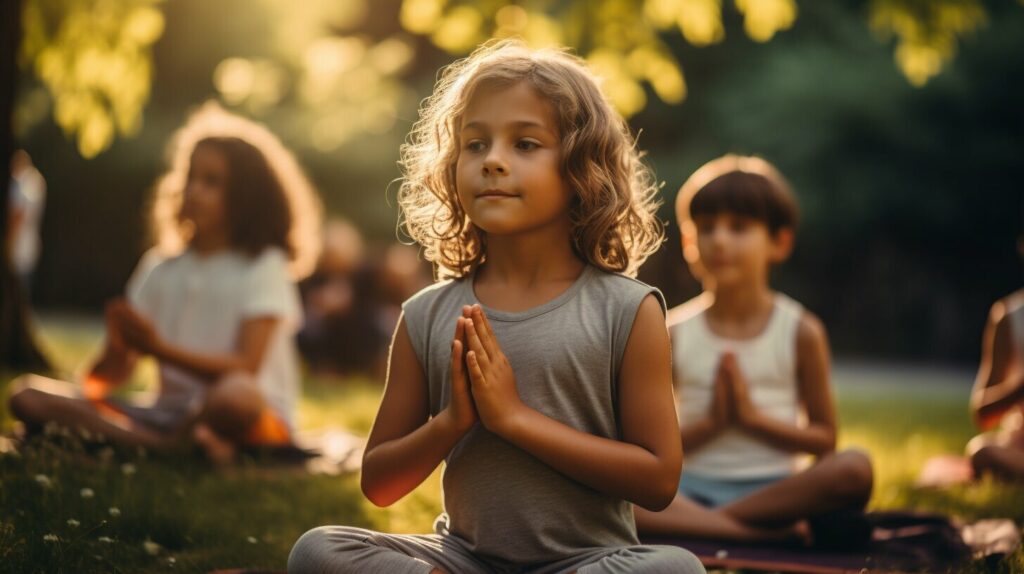
Cultivating Mindfulness in Everyday Life
Teaching children about mindfulness is not just about introducing them to the concept and leaving it at that. It’s important to also encourage mindfulness in their daily lives. Here are some techniques to help you cultivate mindfulness in your child’s everyday routine.
Start and End the Day Mindfully
Help your child begin and end their day with a calm and focused mindset. You can do this by introducing a simple mindfulness exercise such as deep breathing or a body scan. Encourage your child to take a few deep breaths and focus on each inhalation and exhalation. This can help them start and end their day feeling centered and relaxed.
Encourage Mindful Eating
Mindful eating is a great way to introduce mindfulness into your child’s daily routine. You can encourage your child to eat slowly, savoring each bite and taking the time to really taste their food. Ask them to notice the textures, flavors, and smells of their meal. This can help them appreciate their food more and communicate their feelings in a better way.
Practice Mindfulness During Daily Activities
Encourage your child to practice mindfulness during daily activities such as brushing their teeth, taking a shower, or getting dressed. Ask them to focus on each step of the activity and notice their thoughts and feelings as they carry it out. This can help them cultivate mindfulness in different aspects of their lives and develop a deeper sense of awareness.
Turn Mindfulness into a Game
Make mindfulness fun by turning it into a game. Create a scavenger hunt for items that represent different mindfulness concepts, such as gratitude, kindness, and compassion. Alternatively, play a game of “mindful charades” where you act out different mindfulness practices and see if your child can guess what you’re doing.
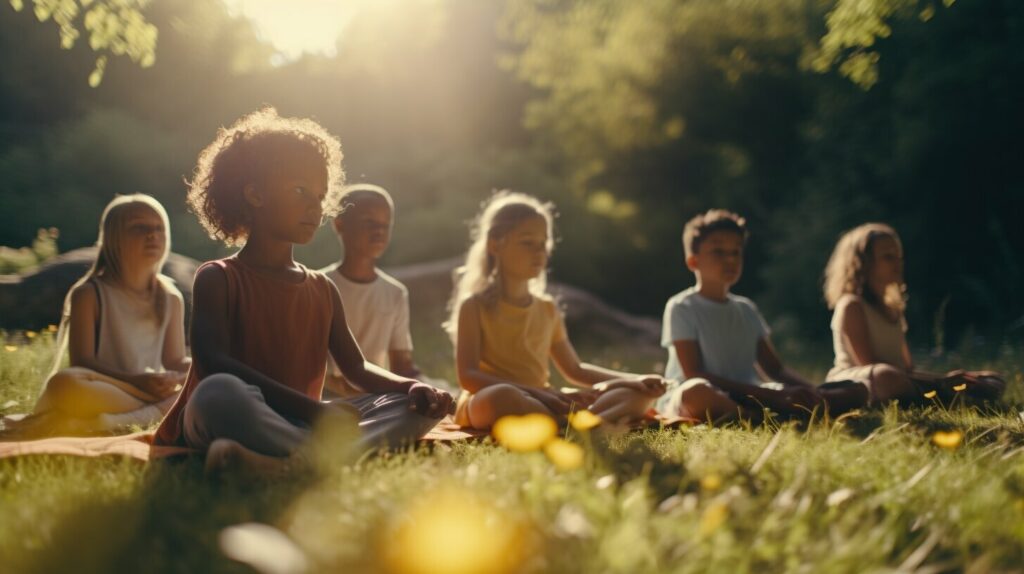
Incorporating mindfulness into your child’s daily routine can help them develop a deeper sense of awareness and emotional intelligence. By practicing mindfulness together, you can create a supportive and nurturing environment that promotes emotional well-being and encourages a positive attitude towards life.
Mindfulness and Emotional Regulation
Mindfulness can help children regulate their emotions and manage stress. By practicing mindfulness, children can learn to identify their emotions and respond to them in a healthy way. Here are some exercises you can try with your child to promote emotional well-being:
- Belly breathing: Have your child lie down on their back and place their hands on their belly. Inhale deeply through their nose, filling their belly with air. As they exhale through their mouth, encourage them to let their belly fall. Repeat several times.
- Body scan: Guide your child through a body scan, asking them to focus on how each part of their body feels. Encourage them to notice any tension or discomfort and breathe into those areas to release the tension.
- Mindful listening: Play a sound, such as a bell or a chime, and ask your child to listen carefully to the sound until it fades away completely. This exercise can help your child learn to focus their attention and improve their listening skills.
By incorporating these exercises into your child’s daily routine, you can help them develop the skills they need to regulate their emotions and manage stress.

Addressing Common Questions and Concerns
Introducing mindfulness to children may raise some questions and concerns for parents and caregivers. Here are some common ones:
- Will mindfulness make my child less active?
- Is mindfulness a religious or spiritual practice?
- How do I know if my child is ready for mindfulness?
- What if my child doesn’t like mindfulness?
- Is it okay if my child gets distracted during mindfulness practice?
No, mindfulness can actually increase a child’s ability to focus and improve their overall well-being.
Mindfulness is not necessarily tied to any specific religion or spirituality, and it can be practiced in a secular context as well.
Children of all ages can benefit from mindfulness, even toddlers can start practicing simple techniques.
Not every child will enjoy mindfulness right away. It may take time for them to warm up to the idea and find techniques that work for them.
Absolutely! The goal of mindfulness is not to eliminate distractions but to learn how to acknowledge them and refocus on the present moment.
Tip: It’s important to approach mindfulness with an open mind and a non-judgmental attitude. Encourage your child to explore mindfulness at their own pace and find what works best for them.
By addressing these common questions and concerns, you can feel more confident in your ability to support your child’s mindfulness practice.

Supporting Mindfulness Development in Children
Now that you know the benefits of mindfulness for children, you may be wondering how you can support your child’s mindfulness development. Here are some strategies to get you started:
Create a Mindful Environment
Creating a calm and peaceful environment at home can help your child feel more relaxed and open to mindfulness practices. You can try:
- Playing soft music or nature sounds
- Using essential oils or candles with calming scents
- Dimming the lights
- Organizing your child’s space to reduce clutter and distractions
By creating a peaceful environment, you are setting the stage for your child to practice mindfulness.
Lead by Example
Kids are observant and often imitate the behavior they see in adults. By practicing mindfulness yourself, you are modeling positive behavior for your child. Try practicing mindfulness together, whether it’s through a guided meditation or simply taking a moment to focus on your breath.
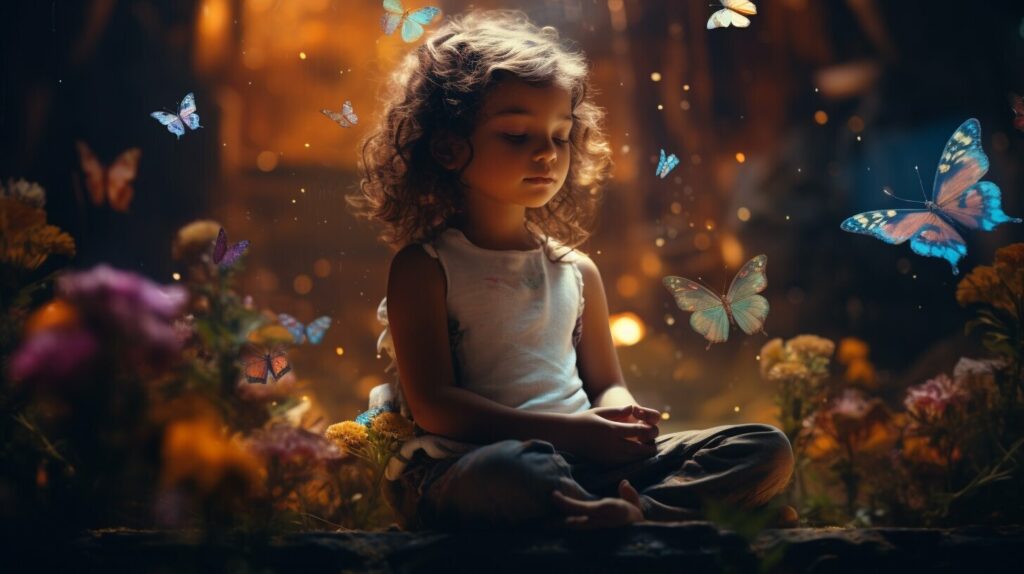
Make It a Habit
Consistency is key when it comes to mindfulness. Try to incorporate mindfulness practices into your child’s daily routine, whether it’s a few minutes of meditation in the morning or a mindful walk after dinner. Encourage your child to practice mindfulness whenever they feel overwhelmed or stressed.
Keep It Fun
Remember, mindfulness should be a positive and enjoyable experience for your child. Keep it playful and engaging by incorporating games, crafts or nature walks into your mindfulness practices. A fun and creative approach can help your child build a lasting connection to mindfulness.
By following these strategies, you can create a supportive and nurturing environment for your child’s mindfulness development. With patience and consistency, your child can develop mindfulness skills that will benefit them throughout their lives.
Mindfulness Resources for Children
If you want to support your child’s mindfulness development, there are many resources available to help them explore mindfulness in a fun and engaging way. Here are some of our top recommendations:
Mindful Books for Kids
| Book Title | Age Range | Description |
|---|---|---|
| The Mindful Dragon | 3-6 years | A beautifully illustrated book that invites children to explore mindfulness through the adventures of a friendly dragon. |
| Sitting Still Like a Frog | 7-12 years | A mindfulness-based activity book that offers children simple exercises to develop focus, calm, and emotional regulation. |
| The Mindful Teen | 13-18 years | A guidebook that teaches teens how to cultivate mindfulness to reduce stress, anxiety, and depression, and enhance well-being. |
Image description: A picture of three books with colorful covers, titles, and a brief description of each book arranged in a table.
Mindful Apps for Kids
There are many mindfulness apps available that are specifically designed for children. Here are some of our top picks:
- Stop, Breathe & Think Kids: An app that helps kids learn about mindfulness, develop emotional regulation skills, and build compassion and gratitude.
- Mindful Powers: An app that offers mindfulness exercises to help children improve their focus, calmness, and sleep quality.
- Calm: An app that provides guided meditations and relaxing sounds to help children reduce stress, improve sleep, and boost self-esteem.
Mindful Websites for Kids
If your child prefers to learn through interactive games and activities, there are many websites available that offer fun and engaging mindfulness resources. Here are some of our favorites:
- Smiling Mind: A website that offers mindfulness exercises for kids, teens, and adults, as well as guided meditations for sleep and stress relief.
- Mindful Schools: A website that provides online courses and resources to teach mindfulness in schools, as well as a free mindfulness app for children.
- KidsHealth: A website that offers articles and videos on mindfulness, yoga, and relaxation techniques for children of all ages.

By introducing your child to these resources, you can help them develop a lifelong habit of mindfulness that will benefit them in numerous ways. Encourage them to explore these resources and find what works best for them.
Mindfulness and Emotional Regulation
Mindfulness is an effective tool for helping children regulate their emotions and manage stress. When children learn to be present in the moment and observe their thoughts and feelings nonjudgmentally, they develop the ability to respond to difficult situations in a more calm, thoughtful way.
One simple mindfulness exercise is the “breathing balloon.” Have your child imagine that their belly is a balloon. As they inhale, encourage them to fill up the balloon with air, and as they exhale, imagine the balloon slowly deflating. This exercise helps children focus on their breath and become more aware of their bodily sensations.
Another technique is the “mindful pause.” Teach your child to take a deep breath and count to three before reacting to a situation that triggers a strong emotional response. This pause gives them space to assess the situation and choose a more thoughtful response.

Studies have shown that practicing mindfulness can improve emotional regulation in children and reduce symptoms of anxiety and depression. By incorporating mindfulness exercises into your child’s daily routine, you can help them build emotional resilience and become more confident in facing life’s challenges.
Mindfulness and Building Resilience
Teaching children about mindfulness can help them develop resilience in the face of adversity. Mindfulness practices can promote a positive mindset and enable children to bounce back from challenges.
One technique that can help build resilience in children is the “breathing buddy” exercise. Have your child choose a stuffed animal or toy to be their breathing buddy. Encourage them to lie down with their buddy on their belly and take slow, deep breaths, watching their buddy rise and fall with each inhale and exhale. This exercise helps children focus on their breath and connect with their bodies, promoting a sense of calm and relaxation.
Another mindfulness practice that can foster resilience is the “gratitude journal.” Encourage your child to write down three things they are grateful for each day, whether it’s a sunny day or spending time with a friend. This exercise helps children focus on the positive aspects of their lives and builds a sense of gratitude and contentment.
Incorporating mindfulness into your child’s daily routine can also help them build resilience. Encourage them to take a mindful walk outside, noticing the sights, sounds, and smells around them. Practice mindful eating by encouraging them to savor each bite and pay attention to the flavors and textures of their food.
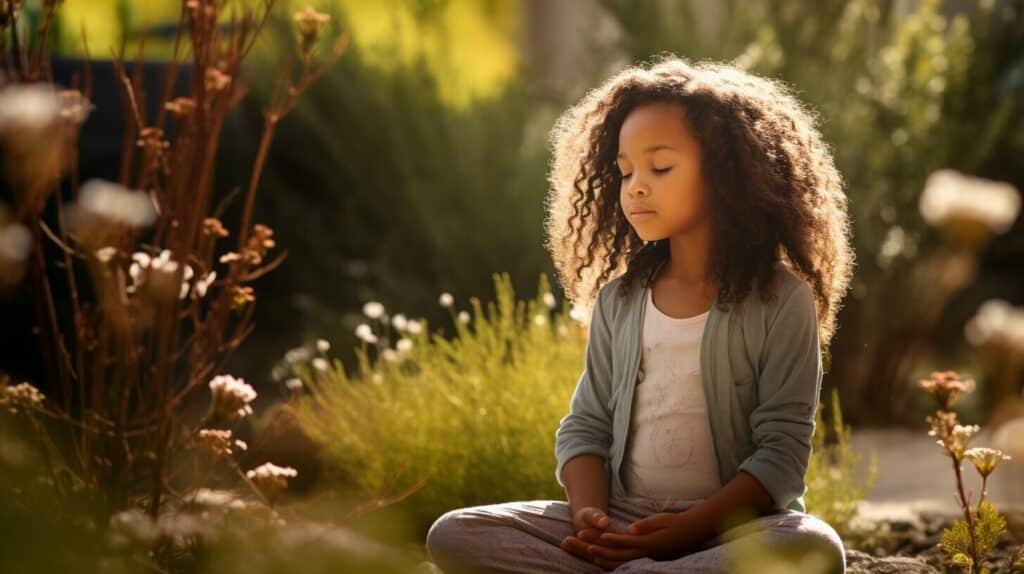
By fostering mindfulness practices in your child’s life, you can help them develop the skills they need to overcome challenges and thrive in the face of adversity.
Conclusion
Congratulations! You have learned how to explain mindfulness to children in a simple and fun way. By introducing mindfulness to children at a young age, you can help them build important skills such as emotional regulation and resilience. Remember to make mindfulness activities engaging and interactive to keep them interested.
Keep It Up!
Teaching children mindfulness is a long-term process that requires patience and consistency. Keep offering them opportunities to practice mindfulness and encourage them to apply it in their daily lives. As they continue to grow and develop, they will reap the benefits of a mindful outlook.
Final Thoughts
We hope you found this article helpful in teaching mindfulness to children. Remember to create a supportive environment for them and to lead by example. By prioritizing mindfulness in your own life, you can inspire children to do the same. Happy mindfulness teaching!
How Can I Use Fun Methods to Explain DevOps to a Child?
Explaining DevOps to a child can be a fun experience! By adopting easy methods for explaining devops, such as using an analogy like a sports team, kids can grasp the concept easily. Visual aids, like drawings or diagrams, can also make it more engaging and understandable. By breaking down the process into simple steps, using relatable examples, and encouraging questions, children can have a clearer understanding of DevOps and its importance in the tech world.
FAQ
Q: What is mindfulness?
A: Mindfulness is the practice of being fully present and aware of our thoughts, feelings, and sensations in the present moment without judgment.
Q: Why is mindfulness beneficial for children?
A: Mindfulness can help children develop self-awareness, emotional regulation, and focus. It can also enhance their overall well-being and resilience.
Q: How can I introduce mindfulness to my child?
A: There are various approaches to introducing mindfulness to children. You can engage them in fun activities, such as breathing exercises, mindful coloring, or sensory exploration.
Q: What are some mindfulness activities for children?
A: Mindfulness activities for children can include mindful walking, body scans, mindful eating, and gratitude exercises. These activities are designed to be interactive and engaging for kids.
Q: How can mindfulness be incorporated into a child’s daily routine?
A: You can encourage mindfulness by integrating it into everyday activities, such as mindful eating, mindful listening, or taking a few moments to breathe and relax before starting a new task.
Q: What are the benefits of mindfulness for children?
A: Practicing mindfulness can enhance a child’s emotional well-being, focus, and overall happiness. It can also improve their ability to manage stress and regulate their emotions.
Q: How do I address common questions and concerns when teaching mindfulness to children?
A: When addressing common questions and concerns, it is important to provide clear explanations and reassurance. You can also emphasize the benefits of mindfulness and address any misconceptions that may arise.
Q: How can I support my child’s mindfulness development?
A: You can support your child’s mindfulness development by creating a supportive environment, modeling mindful behavior, and practicing mindfulness together. Encouraging open communication and fostering a positive mindset towards mindfulness is also essential.
Q: Are there any resources available for children to learn more about mindfulness?
A: Yes, there are various books, apps, and websites that offer child-friendly mindfulness resources and tools. These resources can provide additional guidance and support for children who are interested in exploring mindfulness further.
Q: How does mindfulness help with emotional regulation?
A: Mindfulness can help children develop awareness of their emotions and learn to respond to them in a calm and non-judgmental way. It can provide them with tools to manage stress, regulate emotions, and make more mindful choices.
Q: How does mindfulness contribute to building resilience in children?
A: Mindfulness can help children build resilience by teaching them to approach challenges with a positive mindset, manage stress, and develop self-compassion. It can also improve their ability to bounce back from adversity and adapt to change.




